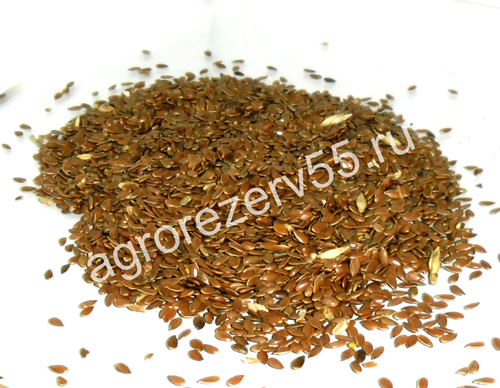LINEN
Oilseed flax is a very valuable industrial crop.
Oil flax belongs to the species Linum usitatissimum L. (cultivated flax), the flax family - Linaceal Dum. Cultivated flax is divided into 5 subspecies: fiber flax, mezheumok, curly, large-seeded and semi-winter (creeping). As an oilseed crop, mainly curly and mezheumok are sown. Cultivated flax is a spring annual crop, but there are also semi-winter species. The fruit is a small (up to 8 mm) five-cell box. Seeds are elongated-elliptical, strongly flattened, smooth, shiny.
The content of oil and protein in the seeds of modern breeding varieties of flax reaches 50% and 33%, respectively. The oil is successfully used in food, printing, leather and footwear, medical, textile, perfumery and other industries. It is a raw material for the production of various coatings, artificial fibers, insulating foams, plasticizers, high pressure lubricants and other polymers.

Flax seed is a source of a large amount of vitamins - C, B1, B2, B6, pantothenic and folic acids, biotin, tocopherols (vitamin E). Flaxseed is one of the richest sources of lignans, substances with powerful antioxidant effects. In addition, lignans have anti-allergenic, anti-carcinogenic, antibacterial and antimicrobial properties.
Flax oilseed waste (cake and meal) is a valuable concentrated feed for livestock with a high protein content, which is not inferior to sunflower and rapeseed cake in terms of essential amino acids and nutritional value. So, 1 kg of cake contains up to 1.14 feed. units and 285 g of digestible protein. 1 centner of oil flax chaff contains 27 fodder. units and 2 kg of protein is an excellent feed for farm animals.
The enterprise processes flax in accordance with GOST 10582-76 “Oil flax seeds. Industrial Raw Materials.TU”.
Omsk, 4th Transportnaya, 53, +7 (3812) 330-900, e-mail: agrorezerv55@mail.ru |
||
| © LLC "AGRORESERVE", 2016 - 2022 гг. | ||
